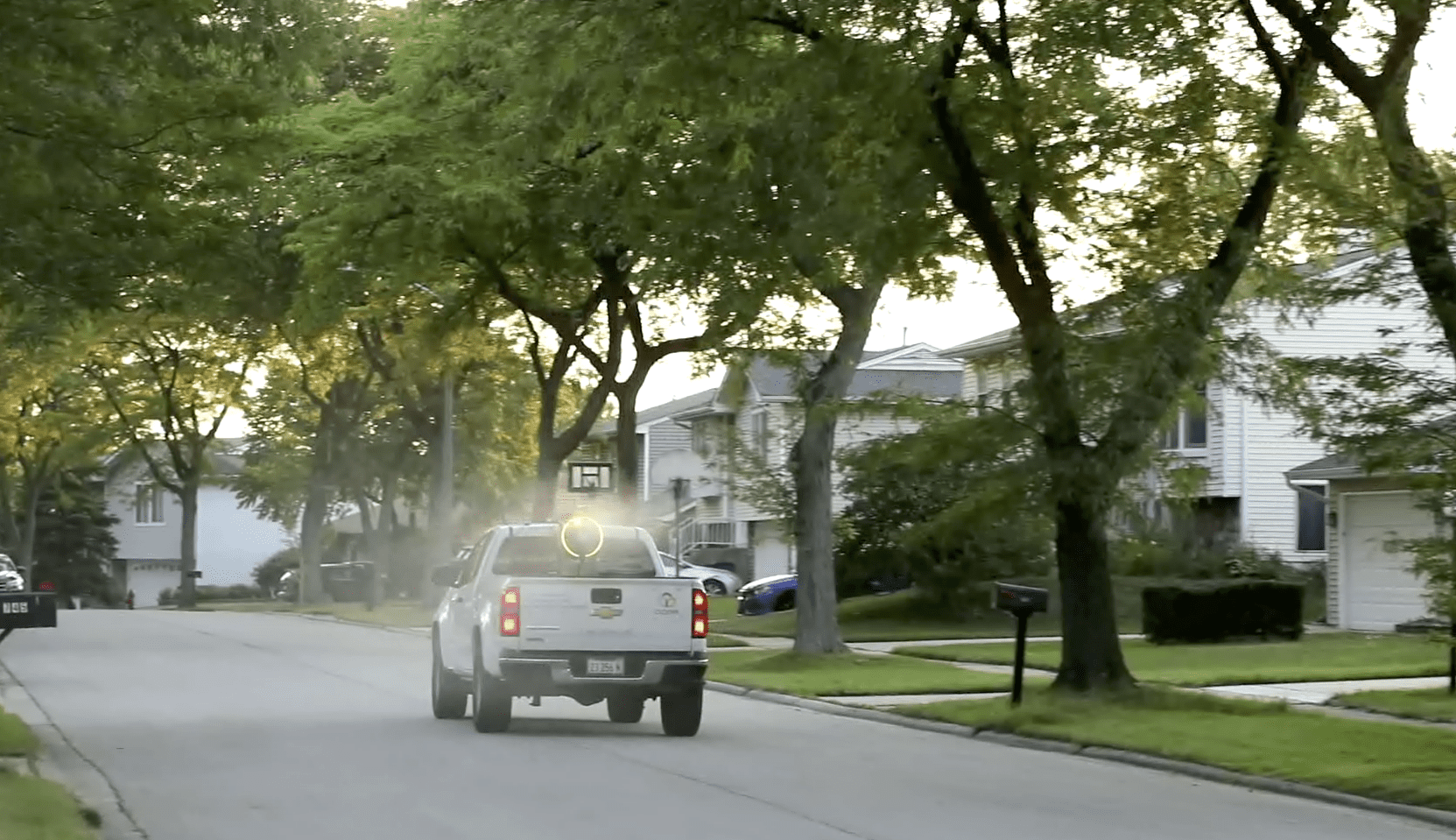Mosquito Spraying: A Guide to Different Application Methods for Communities and Yards


Mosquito control services use a variety of different application methods to control mosquitoes in communities, private backyards, public parks, and commercial properties. There is no one size fits all solution for keeping mosquito populations in check. Mosquito management programs improve quality of life and comfort when spending outdoors, but are most important for limiting transmission of mosquito-borne diseases such as West Nile Virus, Zika, and various types of Encephalitis.
If you’re a resident of a community that provides mosquito control treatments, or you are looking to hire a service to reduce mosquito populations on your own property, it will be helpful to know the main types of control methods used, along with the benefits and drawbacks of each.
There are three types of mosquito control applications that are the most commonly used to reduce mosquito populations:

Night-time mosquito control applications are commonly used for wide-area mosquito control, such as across an entire community or a very large commercial or private property. Both the EPA and CDC recognize a legitimate and compelling need for the prudent use of night-time spray treatments to control adult mosquitoes, especially to prevent the risk of mosquito-borne disease.
ULV equipment converts a liquid mosquito control product into an ultra-fine spray cloud comprised of microscopic droplets that are so small, more than 15 individual droplets could fit on the head of a pin. The small size of the droplets allows them to float through the air for a short period of time so they can come in contact with flying adult mosquitoes. The droplet formulation is designed to penetrate the cuticle of the mosquito, affecting its nervous system, knocking it down and ultimately delivering mortality. ULV applications for mosquito control use a very small amount of product and a very low amount of active ingredient. Mosquito control formulations use often contain less than 2% active ingredient, and applications put out 1 ounce of formulated product per land acre (about the size of a football field). The dose is extremely low because it is formulated to work specifically on mosquitoes.
Night-time mosquito control treatments are conducted using Ultra-Low Volume (ULV) application equipment, typically mounted to the bed of a pick-up truck or an ATV. In some regions, fixed-wing aircraft are used to make night-time mosquito treatments in order to cover a large geographic area in a short window of time. In addition, some areas are also utilizing drone equipment for applications.
The benefits of night-time mosquito spraying include:
The trade-offs for night-time mosquito spraying include:

Comparatively, there is another type of mosquito control treatment conducted during the day called a barrier application. Barrier treatments are the most common application method used for backyard mosquito control. Many barrier products do contain the same active ingredients that are used for night-time spray treatments, but the dose rate and application method, and in some cases even the formulation design, are completely different.
Mosquito control products formulated for barrier control are designed to last in the treatment area for several days, if not weeks, depending on the product used and weather conditions. They work by controlling mosquitoes that land and rest on treated plants or hard surfaces. And because the product works on contact and needs to last for an extended period of time in a wide range of weather conditions, the dose rate required for mosquito control is much greater than what is used for night-time ULV applications.
When it comes to barrier applications, they are conducted using backpack spray systems that convert the liquid product into large droplets – 3 to 10x larger than a ULV droplet. The product is applied to vegetation (landscaped plants, foliage, tree lines, etc.) where adult mosquitoes like to rest during the daytime hours. Depending on the product used and the type of license the applicator holds, these products can also be used on hard surfaces around your property like foundation walls or fences. However, barrier products should not be applied on lawns, gardens, or any flowering plants.
The benefits of barrier treatments on vegetation for mosquito control include:
The trade-offs for barrier spraying for mosquitoes include:
If you liked this and are looking to learn more about mosquito control, check out some of these other articles:
Drop us a line. Our Customer Care team is always standing by ready to help!